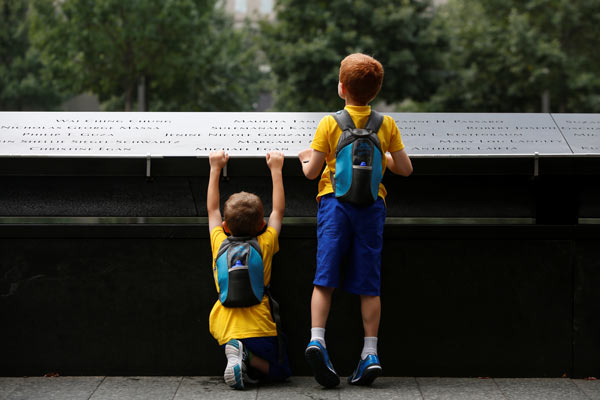15 years after 9/11, Manhattan area 'on the rise'
By Amy He in New York (China Daily) Updated: 2016-09-11 08:32
 |
|
Children peer into the south reflecting pool at the National September 11 Memorial and Museum in Manhattan, New York, US, September 1, 2016. [Photo/Agencies] |
New office towers, a mass transportation hub and new retail complexes that attract young professionals have sprung up in an area that suffered extensive damage to its infrastructure.
"As the rebuilding has progressed, the local economy has changed. The area has become much more residential as older office buildings have been converted to residential use and new towers are completed," said the report, "Transformation of Lower Manhattan's Economy", which was released on Tuesday.
"The streets are filled with young professionals and growing families."
Thomas P. DiNapoli, state comptroller of New York, told The Wall Street Journal that Lower Manhattan is a residential neighborhood "very much on the rise".
The population in Lower Manhattan grew from 22,700 in 2000 to 49,000 in 2014, and more than three-quarters of the population is younger than 45 years old, with the number of children tripling since 2000.
Residential housing units have more than doubled to 30,000 since 2000.
Jonathan Miller, president of appraiser Miller Samuel Inc, said the downtown area has seen a tremendous expansion of development "to the point where over the last decade at least, we've seen price growth in that area at nearly double the overall growth of the borough".







